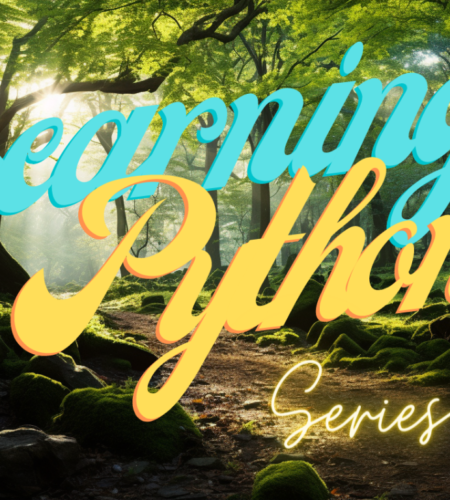Learn Python Programming
Introduction: Unlocking the Magic of Python
Hey there, aspiring coder! Are you curious about the art of programming? Do you find yourself wondering how websites, apps, and software are created? Well, wonder no more! Welcome to the Python Programming for Beginners series, where I’ll be your guide on this exciting adventure.
Picture this: you’re standing at the edge of a vast, uncharted forest. You’ve heard whispers of hidden treasures and secret paths within its depths, and your heart races with anticipation. That forest, my friend, is the realm of programming, and Python is the magical key that will unlock its secrets for you.
Why Python, You Ask?
Python isn’t just a programming language; it’s a bridge between human imagination and digital reality. Think of it as your friendly guide, translating your ideas into a language computers understand. With its simple and elegant syntax, Python is like a storyteller that communicates your instructions to your computer, enabling it to perform tasks, create graphics, analyze data, and much more.
Imagine you’re in a foreign land, and you need to communicate with the locals using a translation device. The smoother and more intuitive the translation, the better your interactions will be. Python is your translation device in the realm of programming, making your instructions clear and concise.
Setting Up Camp: Your Development Environment
Before we take our first steps, let’s set up camp. In the world of programming, your “camp” is your development environment. It’s where you’ll create, test, and run your Python programs. Don’t worry; setting up this camp is easier than pitching a tent!
First, you’ll need Python installed on your computer. Think of Python as the tools you need to explore the forest. Head over to the official Python website and download the version that suits your operating system. It’s like getting the right hiking boots for your adventure.
Next, you’ll need a code editor—an environment where you’ll write your Python code. There are many code editors to choose from, like Visual Studio Code, PyCharm, or even the good old Notepad. Pick one that suits your style, just like choosing the right backpack for your journey.
Hello, World! Your First Python Program
Now that your camp is set up, let’s light our first campfire: your very first Python program. In the programming world, this is like sending out a signal flare to announce your arrival.
Imagine you’re standing in a new town square, and you want to say “hello” to everyone. In Python, saying “hello” to the world is as simple as typing a few lines of code:
print("Hello, World!")When you run this code, you’re telling your computer to display “Hello, World!” on the screen. It’s like writing a message on a giant billboard for everyone to see.
Conclusion: The Adventure Begins
As we wrap up this first leg of our journey, take a moment to savor the excitement and curiosity bubbling within you. You’ve taken the first step into a realm of endless possibilities. In the next blog post, we’ll dive deeper into the language of Python, exploring its basics and syntax.
Just like a traveler embarking on a grand expedition, you’re equipped with your Python tools, your code editor, and your insatiable curiosity. The forest of programming awaits, and together, we’ll navigate its twists and turns, uncover its hidden gems, and conquer its challenges.
So, stay tuned, dear reader, as we delve into the heart of Python’s syntax and embark on an exhilarating journey of discovery. Remember, every great programmer started with a single “Hello, World!” – and from here, your adventure is bound to soar.
See you in the next installment!


Comments